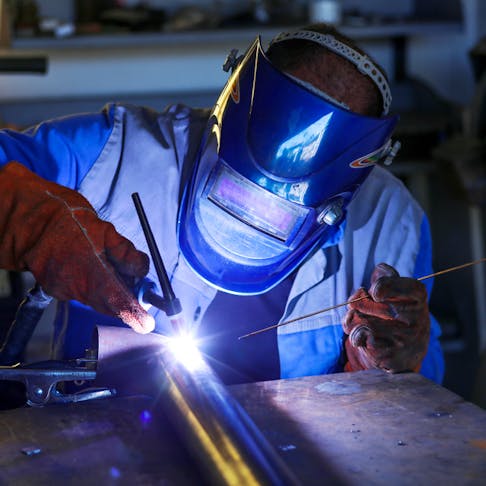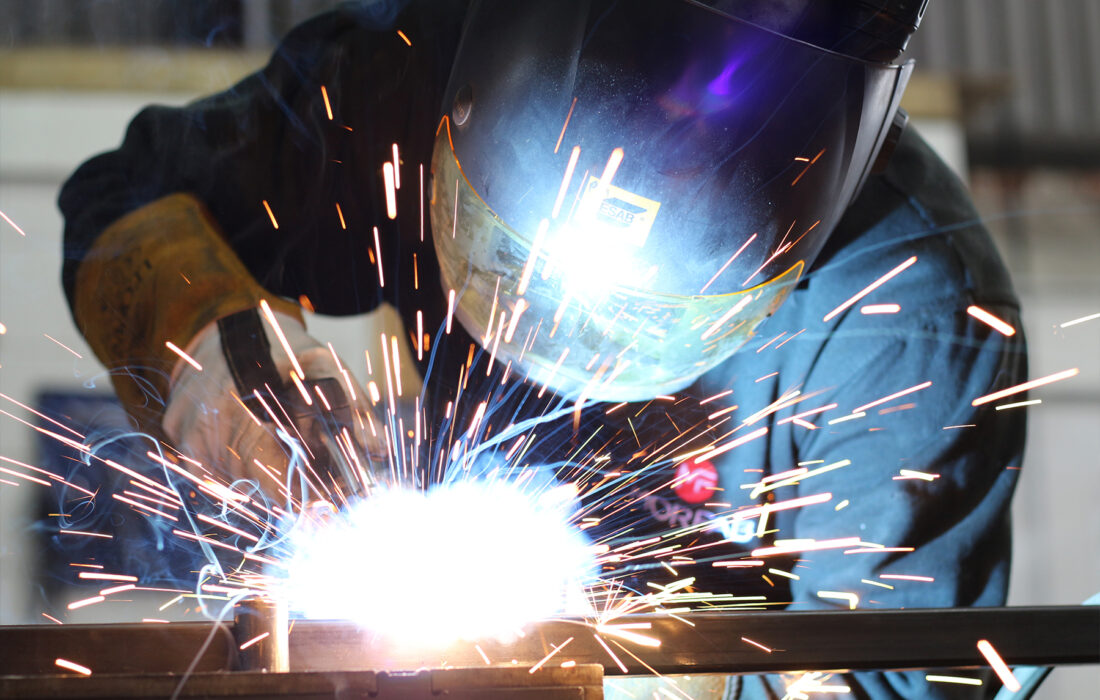Usual Welding Repair Service Issues and Exactly How to Address Them Properly
Welding repair services usually encounter a range of problems that can jeopardize the integrity of the final item. Common problems include insufficient penetration, porosity, and misalignment, to name a few. Each flaw provides special challenges that call for certain methods for resolution. Understanding these problems is vital for welders intending to improve their end results and skills. This discussion will certainly discover these usual welding repair work issues and reliable approaches to address them.
Inadequate Penetration
Inadequate penetration occurs when the weld metal stops working to totally fuse with the base material, resulting in weak joints and prospective structural failings. This problem frequently stems from not enough warmth input, incorrect electrode angle, or improper welding rate. Welders might experience insufficient infiltration due to a mistake of the needed parameters for a specific material density or kind. Additionally, contamination on the base material's surface area can prevent efficient bonding, intensifying the trouble. To attend to insufficient penetration, welders ought to guarantee proper setups on their devices and preserve a clean job surface. Normal inspection of welds is suggested to identify any deficiencies early, enabling prompt adjustments and the prevention of compromised architectural honesty in bonded settings up.
Porosity
Porosity is a common defect in welded joints that shows up as tiny gas bubbles trapped within the weld metal. This defect can compromise the stability of the weld, leading to decreased strength and possible failure under anxiety. Belgrade Fabrication. Porosity usually occurs from contamination, moisture, or inappropriate welding strategies, which allow gases to escape right into the molten weld swimming pool. To deal with porosity, welders need to assure appropriate surface area preparation, keep a clean workplace, and make use of appropriate welding parameters. Furthermore, choosing the best filler product and securing gas can alleviate gas entrapment. Routine assessment and screening of welds can help identify porosity early, guaranteeing prompt restorative activities are taken, thus preserving the high quality and dependability of the bonded framework
Misalignment
Imbalance in welding can develop from different variables, consisting of incorrect arrangement and thermal expansion. Understanding the origin is crucial for reliable resolution. Several adjustment techniques are readily available to straighten components and ensure structural honesty.
Causes of Imbalance
Welding misalignment often stems from a variety of underlying concerns that can endanger architectural integrity. One main cause is incorrect fit-up of components before welding, which can bring about gaps and uneven surfaces. Variants in thermal development during the welding process can likewise result in distortion, specifically if the materials being signed up with have various coefficients of growth. Additionally, inadequate clamping and fixturing might stop working to hold parts firmly in position, resulting in movement during welding. Improperly maintained tools, including welding makers and devices, might introduce disparities in the weld bead, additional contributing to misalignment. Driver mistake, stemming from insufficient training or experience, can also play a considerable role in producing misaligned welds.

Adjustment Techniques Offered
Dealing with misalignment properly calls for a mix of rehabilitative strategies customized to the particular issues at hand. One common approach is using jigs or fixtures to hold components in the correct setting during welding, making sure constant alignment. Additionally, pre-heating the materials can help decrease distortion and boost fit-up. For considerable imbalance, mechanical adjustment strategies, such as making use of hydraulic jacks or clamps, can be utilized to correct the placement before welding. Post-weld heat treatment may likewise be necessary to eliminate stresses brought on by misalignment. Cautious assessment and modification throughout the arrangement stage can stop imbalance concerns from becoming significant problems, advertising a smoother welding procedure and enhancing general structural stability.
Distortion
Distortion is an usual difficulty in welding that can develop from different aspects, consisting of unequal heating & cooling. Recognizing the sources of distortion is necessary for applying reliable prevention methods. Resolving this issue not just boosts architectural integrity however also enhances the total quality of the weld.
Root causes of Distortion
When subjected to the extreme warm of welding, products commonly undertake modifications that can bring about distortion. This phenomenon mainly arises from thermal growth and contraction during the welding process. As the weld location warms up, the material expands; upon air conditioning, it acquires, which can develop internal tensions. Additionally, unequal heating across a work surface can worsen these stresses, leading to warping or flexing. The type of product additionally plays a significant duty; metals with differing thermal conductivity and coefficients of development may respond in different ways, resulting in uncertain distortions. Additionally, inadequate joint layout and poor fixturing can contribute to misalignment throughout welding, raising the possibility of distortion. Comprehending these reasons is necessary for reliable welding repair service and avoidance techniques.
Prevention Techniques
Effective avoidance strategies for distortion during welding concentrate on regulating warm input and guaranteeing proper joint style. Keeping a consistent heat input aids to reduce thermal development and contraction, which can result in distortion. Utilizing strategies such as preheating the work surface can additionally lower the temperature level gradient, advertising uniform heating. Furthermore, picking suitable joint layouts, such as T-joints or lap joints, can boost stability and reduce tension focus. Executing proper fixturing to secure the work surfaces in position additionally aids in keeping placement throughout web link the welding procedure. Staggered welding series can disperse warm much more evenly, avoiding local distortion. By using these methods, welders can considerably decrease the probability of distortion and boost the general quality of their welds.
Breaking
Splitting is a common issue come across in welding repair work, typically resulting from various variables such as incorrect air conditioning rates, material selection, or inadequate joint preparation. The incident of cracks can greatly endanger the stability of the weld, resulting in prospective failures during operation. To resolve this concern, welders must first analyze the root causes, making certain that materials work and appropriately selected for the specific application. Additionally, regulating the cooling price during the welding procedure is vital; rapid cooling can generate anxiety and bring about cracking. Proper joint design and preparation likewise add to minimizing the threat. Executing these methods can enhance weld quality and longevity, inevitably reducing the likelihood of breaking in completed weldments.

Incomplete Blend
A significant issue in welding repair work is insufficient blend, which happens when the weld metal does not effectively bond with the base product or previous weld passes - Montana Mobile Welding and Repair Welding. This defect can bring about weak points in the joint, possibly compromising the stability of the welded structure. Aspects adding to insufficient fusion consist of not enough warm input, inappropriate welding technique, and contamination of the surfaces being signed up with. To resolve this issue successfully, welders must assure appropriate pre-weld cleaning and surface preparation, along with adjust their welding parameters to accomplish ample penetration and fusion. Regular examination during the welding process can also help determine incomplete combination early, permitting for prompt rehabilitative measures to boost the total top quality of the weld
Overheating
While welding fixings can boost structural honesty, overheating offers a significant challenge that can bring about material deterioration. Too much heat throughout welding can modify the mechanical residential properties of steels, causing lowered strength, enhanced brittleness, and warping. This phenomenon is especially crucial in high-stress applications where architectural dependability is vital. Identifying overheating can include visual examinations for staining or distortion, in addition to keeping track of temperature level throughout the welding procedure. To alleviate the dangers connected with overheating, welders ought to employ ideal techniques, such as controlling warmth input, changing traveling rate, and making use of ideal filler materials. Furthermore, applying pre- and post-weld warmth treatments can aid recover product properties and boost the general top quality of the repair, guaranteeing long-lasting performance and safety.
Regularly Asked Questions
What Are the Usual Indicators of a Welding Issue?

How Can I Evaluate My Welds for Top quality?
To examine welds for top quality, one can utilize visual assessments, ultrasonic testing, and radiographic techniques. Each method assures structural stability, determines flaws, and validates adherence to specified standards, eventually enhancing the reliability of the welded joints.
What Safety Precautions Should I Take While Welding?
When welding, one should prioritize security by putting on ideal individual safety devices, making certain appropriate ventilation, protecting flammable products away, maintaining a tidy work area, and recognizing surroundings to prevent accidents and injuries.
Can I Repair a Weld Without Renovating the Entire Joint?
Repairing a weld without renovating the entire Full Article joint is feasible, depending on the damage (Fabrication). Techniques such as grinding, including filler material, or making use of a welding process can successfully attend to particular flaws while protecting the bordering structure
What Devices Are Essential for Efficient Welding Services?
Essential tools for effective welding repair work include a welding device, cable brush, grinder, safety gear, clamps, and filler materials. Each device plays an important duty in making certain high quality and safety and security during the repair work process. Porosity usually develops from contamination, wetness, or incorrect welding methods, which permit gases to leave right into the liquified weld swimming pool. Badly conserved tools, including welding makers and tools, may present disparities in the weld bead, additional contributing to misalignment. When subjected to the intense heat of welding, materials often go through adjustments that can lead to distortion. Splitting is a typical issue experienced in welding repair work, often resulting from various elements such as improper cooling rates, material selection, or inadequate joint prep work. A substantial problem in welding repair work is insufficient blend, which takes place when the weld steel does not sufficiently bond with the base material or previous weld passes.